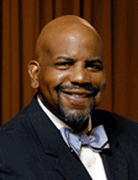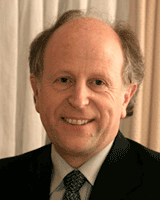- March 27th, 2012
- By John C. Giardina, republished with permission of emagination, a School of Engineering electronic publication
 Two faculty members in the Department of Chemical, Materials, & Biomolecular Engineering have begun a project that has the promise to transform the work and protect the lives of military and law enforcement personnel around the world. Associate Professors Brian Willis and Yong Wang, working on a grant funded by the Office of Naval Research, are attempting to develop an electronic chemical sensing device that can identify the presence of explosives by sampling the vapor around an object.
Two faculty members in the Department of Chemical, Materials, & Biomolecular Engineering have begun a project that has the promise to transform the work and protect the lives of military and law enforcement personnel around the world. Associate Professors Brian Willis and Yong Wang, working on a grant funded by the Office of Naval Research, are attempting to develop an electronic chemical sensing device that can identify the presence of explosives by sampling the vapor around an object.
Improvised explosive devices (IEDs), regularly used in terrorist attacks around the world, present a persistent threat to the people who are tasked to investigate these devices and to the public at large. Because IEDs are often hidden or disguised, they are hard to identify without some kind of sensing technology. “Soldiers rely mostly on their intuition to identify and disarm IEDs,” Dr. Willis says. “There is no ubiquitous sensor that can tell whether a suspicious object is an explosive or not.” Thus, the goal of Drs. Willis and Wang is to develop a device that is sensitive and selective: able to detect specific chemicals that are present at only miniscule amounts in the air.
To do this, the researchers employ a type of molecule called an aptamer, which is a short strand of either DNA or RNA. Specific aptamers, defined by their nucleotide sequence, will often bind to a specific chemical, like those found in explosives. The challenges Drs. Willis and Wang face are to, first, identify specific aptamers and their respective chemical targets, and then design a system where the binding of chemical to aptamer can be detected.
 Dr. Wang’s work focuses on the identification of the specific aptamers. “My side of the project focuses on the identification, amplification, and modification of aptamers,” he says. To do this, Dr. Wang starts with a library of billions of different aptamers. He runs a target chemical through the aptamers and isolates the ones that bind to it. He then amplifies the isolated aptamers and runs the process again. Repeating these steps multiple times, Dr. Wang is able to isolate aptamers that have a high affinity for specific target molecules. At that point, Dr. Wang has to modify the aptamer. “Whenever the chemical binds to the aptamer, the conformation, or shape, of the aptamer changes,” he says. If the aptamers can be designed to change shape in a certain way, the binding of the chemical can be detected more easily.
Dr. Wang’s work focuses on the identification of the specific aptamers. “My side of the project focuses on the identification, amplification, and modification of aptamers,” he says. To do this, Dr. Wang starts with a library of billions of different aptamers. He runs a target chemical through the aptamers and isolates the ones that bind to it. He then amplifies the isolated aptamers and runs the process again. Repeating these steps multiple times, Dr. Wang is able to isolate aptamers that have a high affinity for specific target molecules. At that point, Dr. Wang has to modify the aptamer. “Whenever the chemical binds to the aptamer, the conformation, or shape, of the aptamer changes,” he says. If the aptamers can be designed to change shape in a certain way, the binding of the chemical can be detected more easily.
Now, Dr. Willis’ work comes into play. He is working on designing molecular scale electronic devices that will detect the conformation changes. His research focuses on using electron tunneling devices to electronically detect the target chemical. Electron tunneling is essentially the flow of electrons through a gap between two wires. Normally, one would expect that electrons could not flow through![willis2012_profile[1]](http://news.engr.uconn.edu/wp-content/uploads/willis2012_profile1.gif) two wires that were not touching, but if they are close enough, on a nano-scale, then the two wires will act like a completed circuit. As it turns out, the flow of electrons is strongly affected by what is between the wires. So, if an aptamer is placed between the two contacts, it will change the electrical current. Moreover, any conformation changes will alter the electrical current as well. Because these circuits are so small, a sensing device could have millions of them, with groups of the circuits dedicated to different aptamers. To use the device, air would be flowed past the circuits. If any of the target molecules are present in the air, they will bind to their specific aptamer, changing the conformation. The current running through the circuit attached to the aptamer will then change as well, giving an electrical signal for the presence of the specific chemical in the air.
two wires that were not touching, but if they are close enough, on a nano-scale, then the two wires will act like a completed circuit. As it turns out, the flow of electrons is strongly affected by what is between the wires. So, if an aptamer is placed between the two contacts, it will change the electrical current. Moreover, any conformation changes will alter the electrical current as well. Because these circuits are so small, a sensing device could have millions of them, with groups of the circuits dedicated to different aptamers. To use the device, air would be flowed past the circuits. If any of the target molecules are present in the air, they will bind to their specific aptamer, changing the conformation. The current running through the circuit attached to the aptamer will then change as well, giving an electrical signal for the presence of the specific chemical in the air.
This project has the capability to make explosives detection much faster, more accurate, and safer than it is now. The benefit of such a sensor, though, goes beyond military and law enforcement applications. Dr. Willis says, “One can think of lots of other applications for chemical sensors, commercial applications, in the future as well.” It is not hard to imagine the benefits in many areas of life that can be derived from immediate and accurate chemical detection.
 The University’s Board of Trustees voted recently to bestow upon Dr. Cato T. Laurencin, the distinguished title of University Professor. This honor is reserved for scholars who are widely recognized for contributions in their respective fields.
The University’s Board of Trustees voted recently to bestow upon Dr. Cato T. Laurencin, the distinguished title of University Professor. This honor is reserved for scholars who are widely recognized for contributions in their respective fields.


 Dr. Peter Karp, Director of the Bioinformatics Research Group at SRI International, will be visiting the CMBE Department at UConn as a Guest Professor this summer. Hosted by Professor Ranjan Srivastava, Dr. Karp will engage the UConn community through a series of seminars on Computational Biology and Bioinformatics, as well as carry out research and develop collaborations with faculty at Storrs and the Health Center.
Dr. Peter Karp, Director of the Bioinformatics Research Group at SRI International, will be visiting the CMBE Department at UConn as a Guest Professor this summer. Hosted by Professor Ranjan Srivastava, Dr. Karp will engage the UConn community through a series of seminars on Computational Biology and Bioinformatics, as well as carry out research and develop collaborations with faculty at Storrs and the Health Center. The department would like to extend its congratulations to Leslie Shor for her recognition as a finalist in the 8th Annual Women of Innovation Awards Dinner hosted by the Connecticut Technology Council.
The department would like to extend its congratulations to Leslie Shor for her recognition as a finalist in the 8th Annual Women of Innovation Awards Dinner hosted by the Connecticut Technology Council. Two faculty members in the Department of Chemical, Materials, & Biomolecular Engineering have begun a project that has the promise to transform the work and protect the lives of military and law enforcement personnel around the world. Associate Professors Brian Willis and Yong Wang, working on a grant funded by the Office of Naval Research, are attempting to develop an electronic chemical sensing device that can identify the presence of explosives by sampling the vapor around an object.
Two faculty members in the Department of Chemical, Materials, & Biomolecular Engineering have begun a project that has the promise to transform the work and protect the lives of military and law enforcement personnel around the world. Associate Professors Brian Willis and Yong Wang, working on a grant funded by the Office of Naval Research, are attempting to develop an electronic chemical sensing device that can identify the presence of explosives by sampling the vapor around an object.
![willis2012_profile[1]](http://news.engr.uconn.edu/wp-content/uploads/willis2012_profile1.gif) two wires that were not touching, but if they are close enough, on a nano-scale, then the two wires will act like a completed circuit. As it turns out, the flow of electrons is strongly affected by what is between the wires. So, if an aptamer is placed between the two contacts, it will change the electrical current. Moreover, any conformation changes will alter the electrical current as well. Because these circuits are so small, a sensing device could have millions of them, with groups of the circuits dedicated to different aptamers. To use the device, air would be flowed past the circuits. If any of the target molecules are present in the air, they will bind to their specific aptamer, changing the conformation. The current running through the circuit attached to the aptamer will then change as well, giving an electrical signal for the presence of the specific chemical in the air.
two wires that were not touching, but if they are close enough, on a nano-scale, then the two wires will act like a completed circuit. As it turns out, the flow of electrons is strongly affected by what is between the wires. So, if an aptamer is placed between the two contacts, it will change the electrical current. Moreover, any conformation changes will alter the electrical current as well. Because these circuits are so small, a sensing device could have millions of them, with groups of the circuits dedicated to different aptamers. To use the device, air would be flowed past the circuits. If any of the target molecules are present in the air, they will bind to their specific aptamer, changing the conformation. The current running through the circuit attached to the aptamer will then change as well, giving an electrical signal for the presence of the specific chemical in the air.
